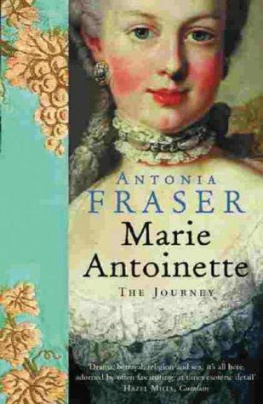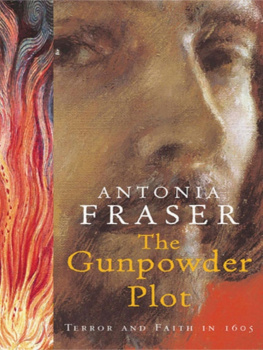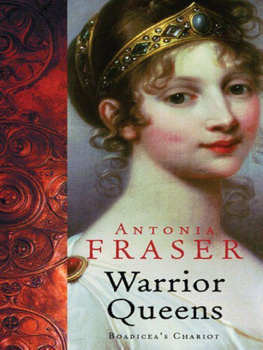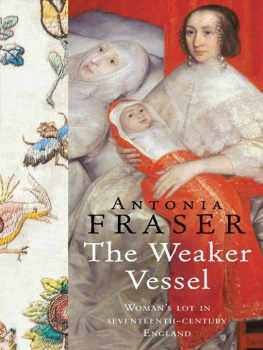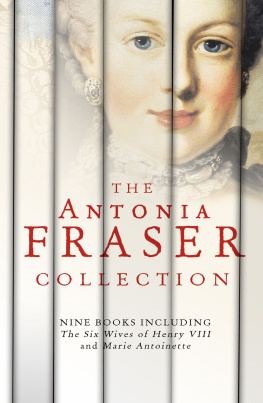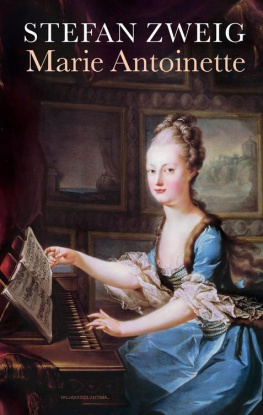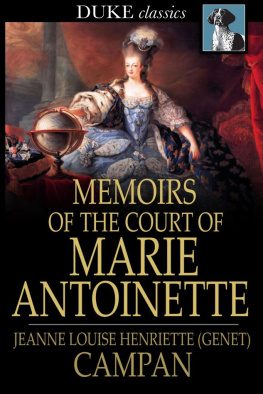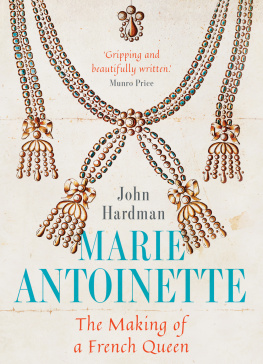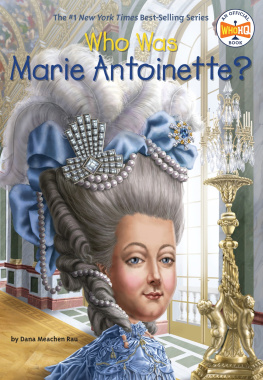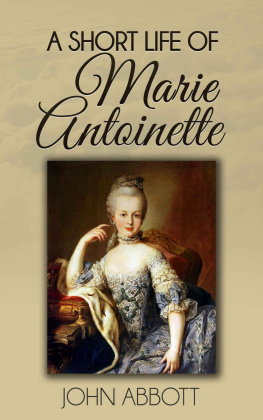Antonia Fraser - Marie Antoinette: The Journey
Here you can read online Antonia Fraser - Marie Antoinette: The Journey full text of the book (entire story) in english for free. Download pdf and epub, get meaning, cover and reviews about this ebook. year: 2001, publisher: Random House, genre: Non-fiction. Description of the work, (preface) as well as reviews are available. Best literature library LitArk.com created for fans of good reading and offers a wide selection of genres:
Romance novel
Science fiction
Adventure
Detective
Science
History
Home and family
Prose
Art
Politics
Computer
Non-fiction
Religion
Business
Children
Humor
Choose a favorite category and find really read worthwhile books. Enjoy immersion in the world of imagination, feel the emotions of the characters or learn something new for yourself, make an fascinating discovery.
- Book:Marie Antoinette: The Journey
- Author:
- Publisher:Random House
- Genre:
- Year:2001
- Rating:4 / 5
- Favourites:Add to favourites
- Your mark:
- 80
- 1
- 2
- 3
- 4
- 5
Marie Antoinette: The Journey: summary, description and annotation
We offer to read an annotation, description, summary or preface (depends on what the author of the book "Marie Antoinette: The Journey" wrote himself). If you haven't found the necessary information about the book — write in the comments, we will try to find it.
Marie Antoinette: The Journey — read online for free the complete book (whole text) full work
Below is the text of the book, divided by pages. System saving the place of the last page read, allows you to conveniently read the book "Marie Antoinette: The Journey" online for free, without having to search again every time where you left off. Put a bookmark, and you can go to the page where you finished reading at any time.
Font size:
Interval:
Bookmark:


Doubleday
NEW YORK LONDON TORONTO
SYDNEY AUCKLAND
THE FIRST READER



 Et in Arcadia Ego: even in Arcadia death is lurking. Madame de Stal, thinking of the brilliance and gaiety of Marie Antoinettes early life in contrast to her later sufferings, was reminded of Poussins great picture on the theme of the omnipresence of death: the revelling shepherds in the forest glade brought up short by the sight of a tomb with this menacing inscription. Yet hindsight can make bad history. In writing this biography, I have tried not to allow the sombre tomb to make its presence felt too early. The elegiac should have its place as well as the tragic, flowers and music as well as revolution and counter-revolution. Above all, I have attempted, at least so far as is humanly possible, to tell Marie Antoinettes dramatic story without anticipating its terrible ending.
Et in Arcadia Ego: even in Arcadia death is lurking. Madame de Stal, thinking of the brilliance and gaiety of Marie Antoinettes early life in contrast to her later sufferings, was reminded of Poussins great picture on the theme of the omnipresence of death: the revelling shepherds in the forest glade brought up short by the sight of a tomb with this menacing inscription. Yet hindsight can make bad history. In writing this biography, I have tried not to allow the sombre tomb to make its presence felt too early. The elegiac should have its place as well as the tragic, flowers and music as well as revolution and counter-revolution. Above all, I have attempted, at least so far as is humanly possible, to tell Marie Antoinettes dramatic story without anticipating its terrible ending. In a book written in English about a French (and Austrian) subject, there is an obvious problem to do with translation. Nor does it have an easy solution. What is tiresomely obscure for one reader may be gratingly obvious to another. On the whole I have preferred to translate rather than not in the interests of clarity. With names and titles I have also placed the need for clarity above consistency; even if some decisions may seem arbitrary in consequence, intelligibility has been the aim. Where eighteenth-century money is concerned, it is notoriously difficult to provide any idea of the modern equivalent so on the whole I have avoided doing so. However, one recent estimate equated a pound sterling in 1790 to 45 in 1996; there were roughly 24 livres to the pound in the reign of Louis XVI.1 As ever, it has been my pleasure and privilege to do my own research, except where individuals are specifically and most gratefully acknowledged. The references are, with equal gratitude, listed in the Notes and Sources.
In a book written in English about a French (and Austrian) subject, there is an obvious problem to do with translation. Nor does it have an easy solution. What is tiresomely obscure for one reader may be gratingly obvious to another. On the whole I have preferred to translate rather than not in the interests of clarity. With names and titles I have also placed the need for clarity above consistency; even if some decisions may seem arbitrary in consequence, intelligibility has been the aim. Where eighteenth-century money is concerned, it is notoriously difficult to provide any idea of the modern equivalent so on the whole I have avoided doing so. However, one recent estimate equated a pound sterling in 1790 to 45 in 1996; there were roughly 24 livres to the pound in the reign of Louis XVI.1 As ever, it has been my pleasure and privilege to do my own research, except where individuals are specifically and most gratefully acknowledged. The references are, with equal gratitude, listed in the Notes and Sources.Font size:
Interval:
Bookmark:
Similar books «Marie Antoinette: The Journey»
Look at similar books to Marie Antoinette: The Journey. We have selected literature similar in name and meaning in the hope of providing readers with more options to find new, interesting, not yet read works.
Discussion, reviews of the book Marie Antoinette: The Journey and just readers' own opinions. Leave your comments, write what you think about the work, its meaning or the main characters. Specify what exactly you liked and what you didn't like, and why you think so.

